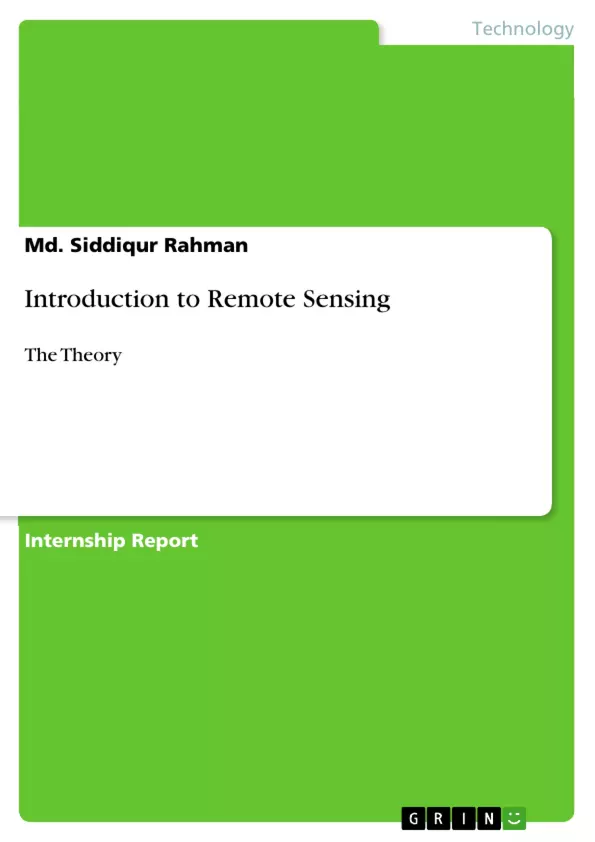Remote sensing is the acquisition of information about an object or phenomenon, without making physical contact with the object. It primarily concerned with deriving information about the earth’s surface using an elevated platform. History of RS is not so old. It started from manual aerial photo capturing and interpretation and now running with modern satellite image capturing. A Remote sensing system comprises all the available components (both hard and soft wares), the online server, their interactions and interrelations in doing a particular job like image processing from satellite data. RSS comprises Platforms, Sensor, Computer system, Server, Institutional setups, Energy source and finally Image interpretation. Energy interactions with the atmosphere dictate the spectral regions through which only we can do the remote sensing which are known as spectral windows. The total incident energy will interact with earth’s surface materials in three ways. These are: Absorption, Transmission, and Reflection. Radiometric and Geometric characteristics of remotely sensed images comprise Radiant energy, flux, intensity, Irradiance, emittance, Radiance, Radiometric resolution, Film exposure of sensor, Instantaneous Field Of View and Extraneous Geometric effect. Locations and other characteristics of natural features and human activities on, above and beneath the earth’s surface are recorded as information for RS. The raster (or grid-cell) data model has developed from aerial and satellite-imaging technology, which represents geographical objects as grid-cell structures known as pixels. The location of geographic objects or conditions is defined by the row and column position of the cells they occupy. Information available on remotely sensed images may have three modes or dimensions, i.e. spatial, temporal, or thematic. After image capturing and storing, images are manipulated and interpreted. The process of image processing are consists of Georeferencing, Classification and analysis. A remotely sensed data comprises following spectral characteristics like Bandwidth, Band placement, Number of bands etc.
Table of Contents
- Definition of Remote Sensing (RS)
- Brief history of RS
- RS system
- Interactions of EME with earth surface
- Platforms and Sensors used in RS
- Platforms
- Sensors
- Radiometric and Geometric characteristics of remotely sensed images
Objectives and Key Themes
This report provides an introduction to remote sensing, exploring its definition, history, system components, and the interactions of electromagnetic energy (EME) with the earth's surface. The report also delves into the various platforms and sensors used in remote sensing, concluding with an examination of radiometric and geometric characteristics of remotely sensed images.
- Definition and History of Remote Sensing
- Components of a Remote Sensing System
- Interactions of EME with the Earth's Surface
- Platforms and Sensors in Remote Sensing
- Radiometric and Geometric Characteristics of Images
Chapter Summaries
The report begins by defining remote sensing and providing a brief historical overview, tracing its development from early balloon flights to modern satellite technology. It then describes the components of a remote sensing system, including platforms, sensors, computer systems, servers, institutional setups, and energy sources. The report then explains the interaction of EME with the atmosphere and earth's surface, highlighting the concept of spectral windows. The report concludes by exploring different types of platforms and sensors used in remote sensing, and the radiometric and geometric characteristics of remotely sensed images.
Keywords
This report focuses on remote sensing, covering key concepts like electromagnetic energy (EME), spectral windows, platforms, sensors, radiometric characteristics, and geometric characteristics. It also explores various technologies and applications within remote sensing, highlighting historical advancements and contemporary usage in the field.
- Quote paper
- Md. Siddiqur Rahman (Author), 2011, Introduction to Remote Sensing, Munich, GRIN Verlag, https://www.hausarbeiten.de/document/194960


